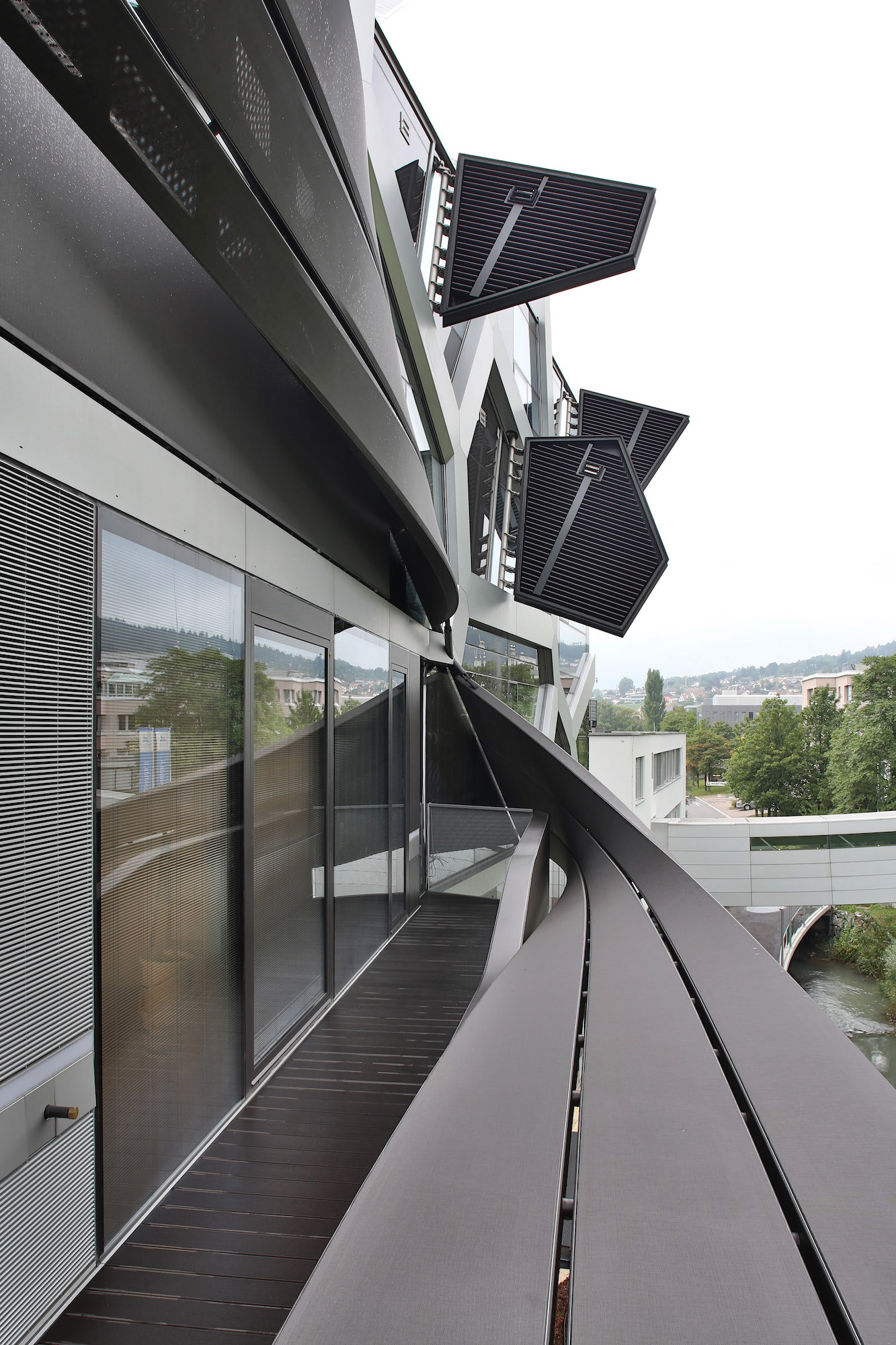Client: Dr. Peter & Renate Marxer
Location: Vaduz / Liechtenstein
Competition: 2011
Completion: 2017
Competition: 2011
Completion: 2017
Building Innovation for an Architecture in Motion
Aimed at tackling and solving challenges of environmental change, the project is built according to the envisioned standards of climate change neutrality in 2050. Investigating new strategies for the reduction of carbon dioxide emission, the whole project is developed on the inherent logic of sustainability. Sustainability as a holistic concept becomes form-generating. This applies to the massing of the building, as well as to the construction of the load bearing elements and the development of the energy technology.
On the level of construction, sustainability is defined by the adaptability of the building itself. The design and distribution of the load bearing elements allows for spatial reprogramming over the entire lifespan of the building without impacting load bearing components.
On the level of energy design, the building is sustainable by using renewable energy forms exclusively, and due to the local energy production and new techniques regulating the building climate.
Solar and interstellar radiation are made productive for air conditioning the building by means of facade elements with latent heat storage devices specifically developed for the project. The building works as a networked structure managing a local cluster. It is a smart node interconnecting existing buildings, sharing information as well as energy surplus. It is a new model for a decentralised urban energy production system providing a more democratic model of energy production as well as energy distribution.
Applied trans-disciplinary research is foundation for the architectural work
Some of the research findings for the Active Energy Building were developed further into innovative products such as the acoustically active 3D light fields, the high-performance concrete with an outstanding reproduction quality and the multi-component molding technique. Some of these technological inventions yielded a patent, like the movable building envelope, or were built as prototypes demonstrating new knowledge in the field of digital fabrication, such as the 3D freeform textile building envelope – working as a shading device – and the complex 3D Voronoi load-bearing structure.


copyrights: falkeis.architecs
Foto: Roland Korner, Michael Zanghellini